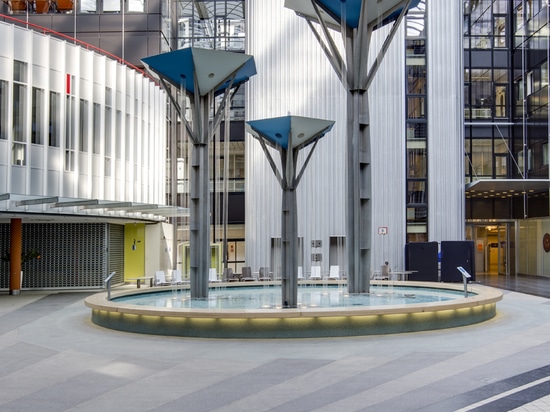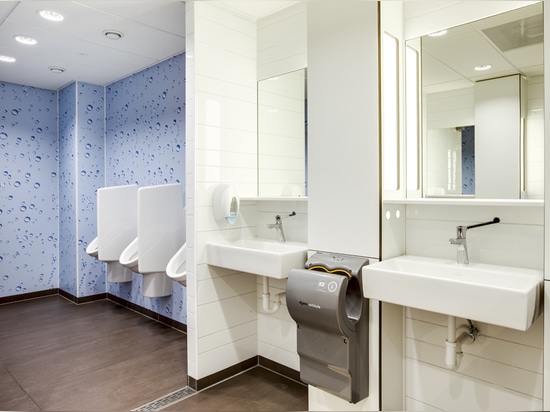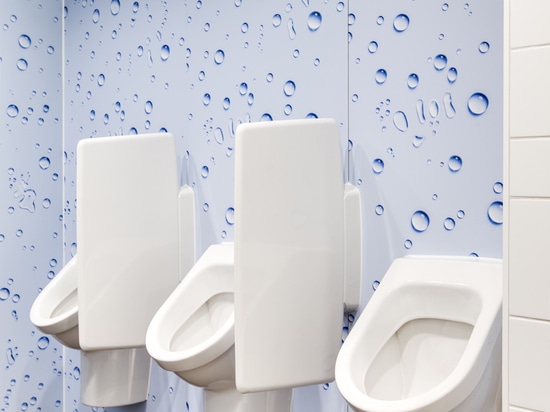
#Product Trends
University Medical Center Groningen UMCG
Highest hygiene demands in the hospital
University Medical Center Groningen, abbreviated as UMCG, plays a leading roll in the development of hospital architecture. The complex has a long history dating back to the 18th century. Since then, both the medicinal offering and the building structure have been continuously expanded and supplemented. In addition to the major architectural and urban planning changes, there have also been minor visible modifications – such as the modernisation of all WC facilities – which assure that the building always meets the highest demands for hygiene and cleanliness. Since 2014 the architectural offices of Groningen Interieurarchitectuur Hart and Royal Haskoning have been continuously replacing all 2,000 WCs in the existing building for innovative -sanitary products from Villeroy & Boch which meet the highest demands on hygiene.
Healing Architecture
Medicine is changing from a pure repair operation to a service sector. Pioneers in this approach are the Scandinavian countries and the Netherlands, where studies on the topic of “healing architecture” were already held in the 1980s, placing the requirements of people in greater focus. Factors such as the design with daylight, protection from noise and environmental stresses, materials and colours, floor plan organisation, and free access to the outdoors can also contribute to prevention of anxiety and stress. The UMCG was the first hospital which drew on these new findings and implemented a comprehensive re-design of the building structures over the course of a 20-year construction phase.
City within the city
With more than 1,300 beds for stationary patients, 18,000 ambulatory patients and visitors per day, 12,000 employees and roughly 3,500 students, the complex is the size of a provincial city. The architecture of the UMCG is closer to that of an urban shopping than a sterile hospital – the grounds are organised into quarters, streets, squares, and green areas, with into locations dedicated to research and education, commerce, and culture. In the hospital’s public area there is a large, inviting shopping street with surprising interior design and artwork. In spite of all this, all the requirements on the procedures and supply, hygiene, and security of a hospital must still be factored in. This is achieved with an absolute separation of the access routes of visitors, patients, and personnel.
Flexible systems for the future
The UMCG was opened in its current form as a single building complex in 1997. With the rapid advancement in medical technology and changing requirements for programmes, comfort, and design, the complex must be constantly adapted and renovated. Two of the newest construction projects are the “Research Laboratory” by UNStudio and the “Education Building” by Thomas Rau. In 2012 the European Research Institute for the Biology of Ageing (ERIBA) by Rudy Uytenhaak was opened. Further new construction is also planned for the coming years.
Highest demands on hygiene
With a building complex the size of a small city, even small projects become a real challenge – as is the case with the renovation of the bathroom facilities. Since 2014, all WCs in the existing building have been equipped with Villeroy & Boch products which meet the highest hygienic standards. These renovation measures have been carried out by Architect Wim Hart, Interieurarchitectuur Hart, and Royal HaskoningDHV from Groningen. The WCs are replaced floor by floor – first in the public WC facilities, then the bathrooms in the ambulatory and surgical wards. Puristic sanitary products from the Memento collection and the Architectura series are installed. The CeramicPlus dirt-repellent surface assures that no residue can form on the ceramic surfaces. Products such as the rimless DirectFlush WC meet the highest hygienic standards. With around 2,000 toilets in the complex, and about 150 flushes per hour, controlled water consumption is also an important factor to be considered in an efficient renovation of the WC facilities. Health, recovery, and well-being of the patients are the central focus of health care facilities – this can only be achieved with the highest demands on cleanliness and hygiene in all private and public areas.








